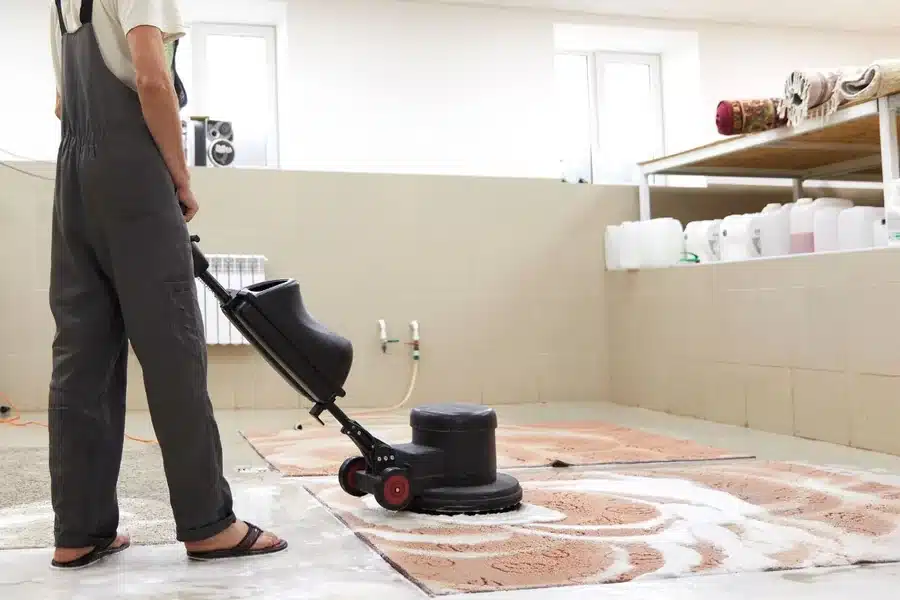Rugs tend to tell stories in our homes. Whether they’re a Persian heirloom with sentimental value that’s followed you from home to home for generations, or simply a well loved statement piece that you’ve been relying on to round out your living room, your rugs do more than provide a softer place to walk — they hold (literal) memories, character, and a certain vibe. But no matter how well-cared-for, eventually most rugs begin to show wear: frayed edges, faded dyes, holes or unraveling threads.
That’s when restoration becomes more than just an option—it becomes a necessity. Luckily, professional rug repair services specialize in bringing these treasured pieces back to life through meticulous techniques honed by years of expertise.
Recognizing the Telltale Signs of Rug Distress
The first step in restoring a rug is identifying what kind of damage it’s sustained. Common issues include:
- Worn or threadbare patches from heavy foot traffic
- Frayed or curling edges that can unravel further if left untreated
- Moth or insect damage leaving holes or thinning areas
- Color fading or bleeding caused by sun exposure or improper cleaning
- Pet damage, including claw marks or lingering stains
Many of these signs start small, making it easy to overlook until the damage becomes extensive. The sooner you spot them, the easier—and more cost-effective—the restoration will be.
The Art (and Science) of Reweaving
For serious structural damage, reweaving is often necessary. Skilled artisans match the original fibers, colors, and weave patterns with painstaking detail. This is especially important in handmade rugs where the design is unique and intricate.
Reweaving isn’t just patching holes—it’s recreating sections of the rug in a way that’s visually seamless. This technique requires both technical precision and an artistic eye, making it a cornerstone of any true professional rug repair service.
Color Retouch/ Color Touch-up and Dye Restore
Throughout the years, exposure to sunlight and strong cleaning compounds can cause your rug to lose its color or have the colors modified. Dye restoration can revitalize these colors. Depending on its composition, the dye is original, and reintroduces the color sensibly and wisely with a pH-neutral solution and traditional dyeing methods.
This type of color restoration is particularly important for antique or valuable rugs where authenticity and precision is the goal. When done properly, it revitalizes your rug without obliterating its soul.
Edge and Fringe Repair
Fringes and edges are frequent victims of everyday wear and tear. And left untreated, these small frays can begin to unravel the rug’s foundation and lead to bigger problems. Restoration crews in some instances are able to reinforce or replace fringes with matching threads or bind the edges with new serging to stabilize the rug.
Some homeowners find that trimming frayed ends is a short-term fix, although it, too, can result in larger areas of unraveling. A good edge repair structure will keep the entire rug from unraveling and also look balanced.
Blocking and Shaping: Falling into Line
Without a firm hand, rolled, stored, or packed rugs may become warped or puckered, losing their taut stances, and shapes. Blocking is a process that re-square’s the rugs foundation, and resets it to it’s original size.
Stretching the rug and gently teasing out any distortions are all part of the process. It’s a subtle, transformative tweak that enhances the look but also the fit of your living space.
Cleaning Both Before and After Restoration
Before beginning any repair work it must be cleaned thoroughly. Dirt, oils, and dirt accumulated on these fibers can hinder dye work and structural work. Professional rug masters implement soft to the fabric cleaning methods in order that no harm is induced while getting the rug ready for restoration.
After repairs are made and the area is secure, another set of finishing treatments could be made to protect these repair areas and prepare the rug to be used once again.
New Life for Heirlooms
When you invest in the restoration of a rug, you’re not only fixing a damaged rug — you are preserving a piece of history, culture and personal significance. Indeed, from hand-knotted masterpieces to everyday family favorites, professional rug repair can return them, sadly worn or weathered, to their former glory (or as near to that state as is humanly possible).
Just because your rug is old or has been damaged, doesn’t mean you can’t restore the beauty. With proper care and skilled touch, even your oldest, most worn rug can be the focal point of a room in your home.



